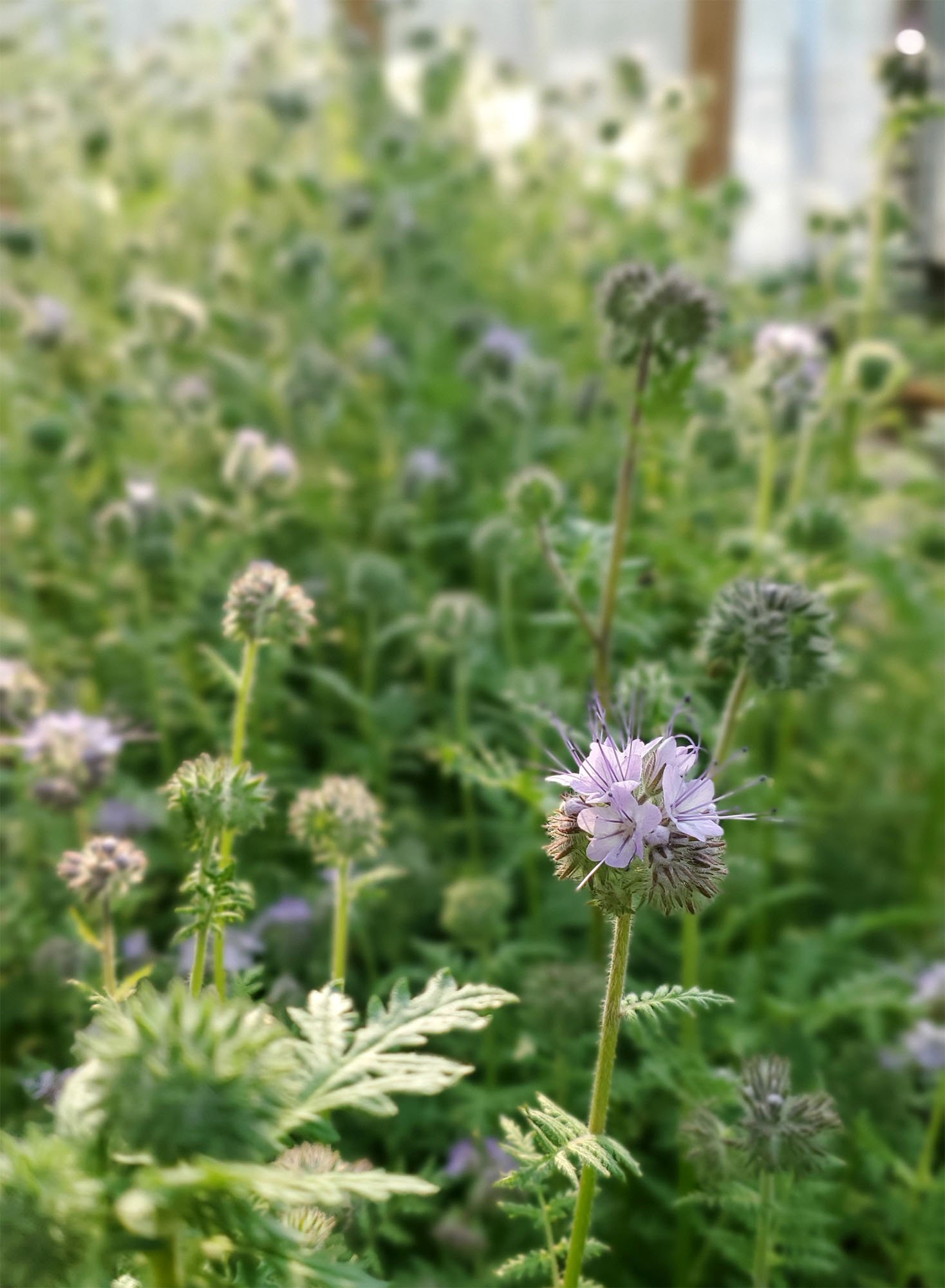Cover Crops on a Micro Flower Farm
/From the beginning of our urban farm in 2015, we’ve incorporated cover crops to help build the soil. Most advice you’ll find about cover cropping is for larger scale farms and vegetable farms, so I’ve had to test and adjust to create a cover cropping plan for our very small-scale flower farm.
You don't need a lot of space to use cover crops effectively! My growing space is less than 1/4 acre, just a few thousand square feet. The farm is laid out in blocks, with several rows per block. Each row is typically 14 or 16 feet. I’ve realized that I can plant cover crops in just a row or two at a time, using what I've learned about their benefits to decide what to plant where and when.
Our first cover crop
We planted a mix including crimson clover to help build the soil. Our chickens also worked the soil and dug weeds.
This season I made an effort to use cover crops more strategically, for specific soil or insect needs and to fill gaps whenever there was bare soil. Rather than trying to grow cover crops in a large area for the whole season, I plugged them in where it made sense.
My first cover crop this year was in the high tunnel, where I seeded phacelia in March to keep the soil covered and provide some early food for bees. It was my first year growing phacelia, and I loved the lacy foliage and how easy it is to grow. It’s also super easy to cut back or pull to make way for other plants. The bees and other pollinators loved it too.
Pretty in purple
Phacelia is quick to germinate, likes cool soil and grows surprisingly tall with minimal irrigation.
For the second year in a row, I seeded a mix of cover crops in our former chicken yard to rehab the soil. I was able to time the plantings so they didn't need any irrigation, and only hand weeded a few times.
This larger area would otherwise be empty and/or full of weeds, as it’s not part of the regular planting space and doesn’t have built-in irrigation. I sowed cover crops there a few times throughout the season, from early April to early September. Some of the cover crops went to seed in the late spring, which meant a free second crop in late summer.
Feeding the soil
Letting a cover crop like this mustard bloom and drop seed means it might grow again when conditions are right for germination.
Planting for success
In our growing zone 5 in northwest Montana, we tend to have a dry period in early spring, some rain in late spring and early summer, very dry summers, and a cooler period in late summer and early fall with some rain. I keep the forecast in mind when planting cover crops so they have the best chance for success. After sowing the seeds I usually rake them in and cover the soil lightly with straw, compost or other mulch.
Ideally the seeds will germinate after a bit of rain, although in midsummer germination tends to be spotty because the soil dries out quickly. Once the crop crop germinates, there isn’t much to do but watch it grow and pull weeds as needed.
When is a cover crop finished?
The seed supplier often specifies when to “terminate” a cover crop, usually after it blooms. Typically a large farm would mow or till a cover crop into the soil, wait a few weeks and then plant, but I don’t use large equipment or follow the same schedules. Instead I usually do one of the following:
Cut the stems near the base (with handheld snips or hedge trimmers) and leave the plant tops on the bed for mulch.
Leave the cover crop to die back in the winter and be covered with snow, and clean up any leftover stalks in the spring.
Pull the plants if they are in the way of other crops, and either use them for mulch or add to the compost pile.
Oat cover crop in early fall
Phacelia beginning to bloom in late spring
pea cover crop in early fall
My cover crop notes
Buckwheat. 30-45 days, not cold hardy, plant in spring or summer, trap crop for thrips or lygus (tarnished plant bug), deters wireworms, allow to drop seed for the next year.
Crimson clover. 70-90 days, cold hardy to 25, plant in fall or spring.
Fava bean. 75-100 days, cold hardy to 25, plant in fall or early spring, fixes nitrogen.
Mustard. 80-90 days, cold hardy to 25, plant in fall or spring, known to suppress soil-borne fungi and nematodes, trap crop for lygus, allow to drop seed in spring for fall crop.
Oat. 60-80 days, cold hardy to 25, plant in fall or spring, great texture in bouquets fresh or dried.
Pea. ~75 days, cold hardy to 25, plant in fall or early spring, fixes nitrogen, tendrils and flowers are edible and delicious.
Phacelia. 45-60 days, cold hardy to 18, plant in spring, attracts hoverflies for biological pest control (aphids etc), may harbor lygus, absorbs excess nitrates and calcium in the soil, tolerant of low water conditions and poor soils, also a good cut flower, smells like grape candy.






